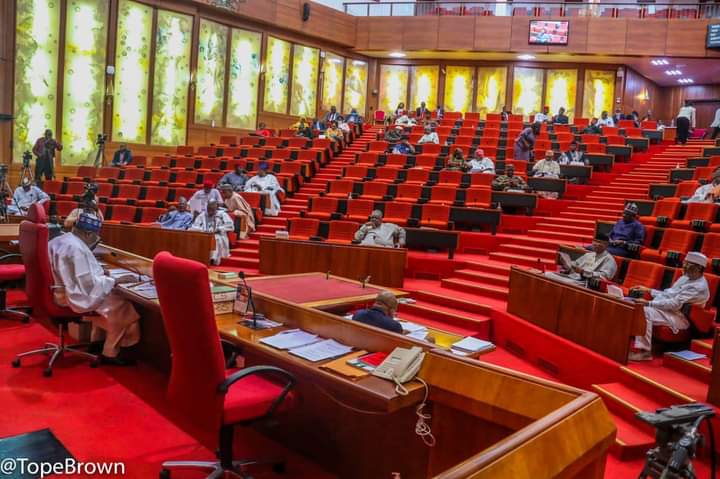President Muhammadu Buhari has launched a new long-term national development plan, the Nigeria Agenda 2050 (NA 2050).
Buhari inaugurated NA 2050 on Wednesday in Abuja before the commencement of the meeting of the federal executive council (FEC).
The NA 2050 is aimed at ensuring Nigeria attains a GDP per capita of $33,328 per annum, placing the country among the top middle-income economies in the world by 2050.
GDP per capita is a measure of a country’s total economic output divided by its total population.
Advertisement
According to World Bank data, Nigeria’s GDP per capita was $2,065.7 in 2021.
Speaking at the launch, Buhari said the plan has the vision of a dynamic, industrialised and knowledge-based economy that generates inclusive and sustainable development for the country.
He added that given the measures already in place for continuous plan implementation, successive administrations would find the document useful in the delivery of electoral promises.
Advertisement
‘‘You will recall that in March, 2020, I approved the development of successor Plans to both Nigeria Vision 20:2020 and the Economic Recovery and Growth Plan (ERGP), 2017-2020. The Plans lapsed in December, 2020,” a statement issued by Femi Adesina, presidential spokesperson, quoted Buhari as saying.
‘‘To give effect to this approval, I inaugurated the National Steering Committee in September, 2020 under the leadership of the Hon. Minister of Finance, Budget and National Planning and a Distinguished private sector operator, Mr. Atedo Peterside.
‘‘The Steering Committee is to superintend the preparation of the Nigeria Agenda 2050 and the National Development Plan (NDP), 2021-2025 to succeed the Nigeria Vision 20: 2020 and Economic Recovery and Growth Plan (ERGP), 2017-2020, respectively.
‘‘At the inauguration, I charged the Steering Committee to prepare inclusive Plans that would cover all shades of opinion and ensure even and balanced development, as well as put in place necessary legislations for continuous implementation of Plans even after the expiration of the tenure of successive Administrations.
Advertisement
‘‘This was achieved with the preparation of the Volume III of the NDP that deals with Legislative Imperatives for identified binding constraints to Plan implementation in Nigeria.
‘‘It is instructive to inform the Council and indeed all Nigerians that I had on December 22, 2021 launched the first of the six number 5-year medium term plans, the National Development Plan (NDP), 2021-2025, that will be used to implement the Long-Term Plan.
‘‘Council also on March 15, 2023 approved the Nigeria Agenda 2050 that we are launching today.”
NEW NATIONAL DEVELOPMENT PLAN TO TACKLE UNEMPLOYMENT, SAYS FINANCE MINISTER
Advertisement
On her part, Zainab Ahmed, minister of finance, budget and national planning, said the plan was formulated against the backdrop of subsisting economic and social challenges facing the country.
She listed the challenges to include fragile and non-inclusive growth, insecurity, high population growth rate, limited concentric economic diversification and low productivity.
Advertisement
‘‘The Plan is a long-term economic transformation blueprint designed to address these challenges,’’ the finance minister said.
Ahmed also told the president and other FEC members present at the launch that with the expected improved capital accumulation, investment as a ratio of gross domestic product (GDP) is expected to increase from the current 29.40 percent to 40.11 percent by 2050.
Advertisement
She explained that under the plan, the bulk of the investment is expected to be financed by the private sector while total employment is expected to rise to 203.41 million in 2050 from 46.49 million in 2020.
‘‘This implies that unemployment will drop significantly to 6.3 percent in 2050 from 33.3 per cent in 2020,” Ahmed said.
Advertisement
“The corollary is that the number of people in poverty will drop to 2.1 percent by 2050 from 83 million in 2020.”
Add a comment






